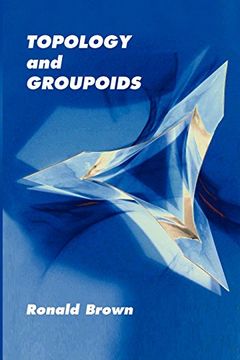Synopsis "Topology and Groupoids (in English)"
This is the third edition of a classic text, previously published in 1968, 1988, and now extended, revised, retitled, updated, and reasonably priced. Throughout it gives motivation and context for theorems and definitions. Thus the definition of a topology is first related to the example of the real line; it is then given in terms of the intuitive notion of neighbourhoods, and then shown to be equivalent to the elegant but spare definition in terms of open sets. Many constructions of topologies are shown to be necessitated by the desire to construct continuous functions, either from or into a space. This is in the modern categorical spirit, and often leads to clearer and simpler proofs. There is a full treatment of finite cell complexes, with the cell decompositions given of projective spaces, in the real, complex and quaternionic cases. This is based on an exposition of identification spaces and adjunction spaces. The exposition of general topology ends with a description of the topology for function spaces, using the modern treatment of the test-open topology, from compact Hausdorff spaces, and so a description of a convenient category of spaces (a term due to the author) in the non Hausdorff case. The second half of the book demonstrates how the use of groupoids rather than just groups gives in 1-dimensional homotopy theory more powerful theorems with simpler proofs. Some of the proofs of results on the fundamental groupoid would be difficult to envisage except in the form given: We verify the required universal property'. This is in the modern categorical spirit. Chapter 6 contains the development of the fundamental groupoid on a set of base points, including the background in category theory. The proof of the van Kampen Theorem in this general form resolves a failure of traditional treatments, in giving a direct computation of the fundamental group of the circle, as well as more complicated examples. Chapter 7 uses the notion of cofibration to develop the notion of operations of the fundamental groupoid on certain sets of homotopy classes. This allows for an important theorem on gluing homotopy equivalences by a method which gives control of the homotopies involved. This theorem first appeared in the 1968 edition. Also given is the family of exact sequences arising from a fibration of groupoids. The development of Combinatorial Groupoid Theory in Chapter 8 allows for unified treatments of free groups, free products of groups, and HNN-extensions, in terms of pushouts of groupoids, and well models the topology of gluing spaces together. These methods lead in Chapter 9 to results on the Phragmen-Brouwer Property, with a Corollary that the complement of any arc in an n-sphere is connected, and then to a proof of the Jordan Curve Theorem. Chapter 10 on covering spaces is again fully in the base point free spirit; it proves the natural theorem that for suitable spaces X, the category of covering spaces of X is equivalent to the category of covering morphisms of the fundamental groupoid of X. This approach gives a convenient way of obtaining covering maps from covering morphisms, and leads easily to traditional results using operations of the fundamental group. Results on pullbacks of coverings are proved using a Mayer-Vietoris type sequence. No other text treats the whole theory directly in this way. Chapter 11 is on Orbit Spaces and Orbit Groupoids, and gives conditions for the fundamental groupoid of the orbit space to be the orbit groupoid of the fundamental groupoid. No other topology text treats this important area. Comments on the relations to the literature are given in Notes at the end of each Chapter. There are over 500 exercises, 114 figures, numerous diagrams. See http: //www.bangor.ac.uk/r.brown/topgpds.html for more information. See http: //mathdl.maa.org/mathDL/19/?rpa=reviews&sa=viewBook& bookId=69421 for a Mathematical Association of America review.

